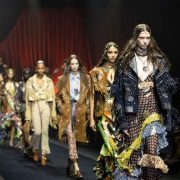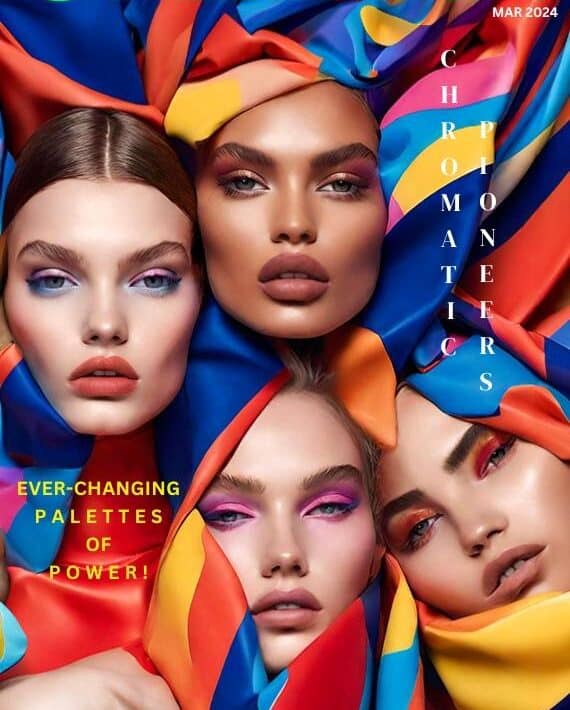The Evolution of Fashion: Beyond Style

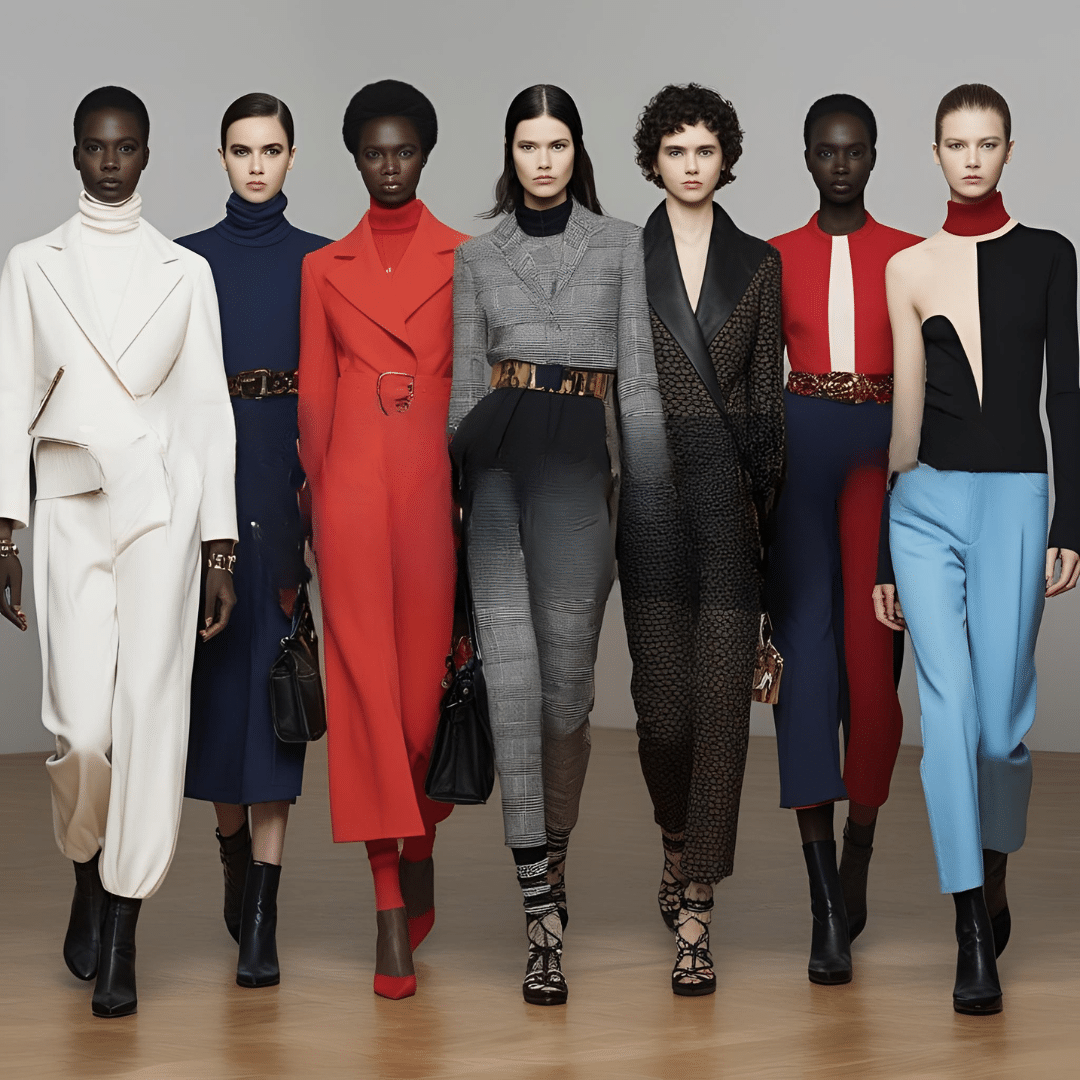
How brands have been exploring new paths pushing their way towards experiences and creating unimaginable bonds
Fashion has always been a reflection of the times, but in recent years, it has transcended its traditional boundaries. No longer confined to the mere presentation of collections and styles, fashion has become a multifaceted form of expression that mingles with art, emotions, spirituality, literature and futuristic visions. This transformation has been driven by a variety of factors that highlight the dynamic nature of the fashion industry.
No doubt Milano Fashion Week Fall-Winter 25-26 has showcased the limitless potential of fashion as a form of artistic and cultural expression, pushing boundaries and redefining norms while celebrating creativity and innovation.
Fashion as Art
Fashion designers have increasingly embraced the idea of clothing as a form of art. This perspective allows them to create pieces that are not just worn but also appreciated for their aesthetic value. Some brands have blurred the lines between fashion and art by creating garments that are as much about visual impact as they are about wearability. Fashion shows have evolved into elaborate performances, where each collection tells a story and evokes emotions akin to an art exhibition.
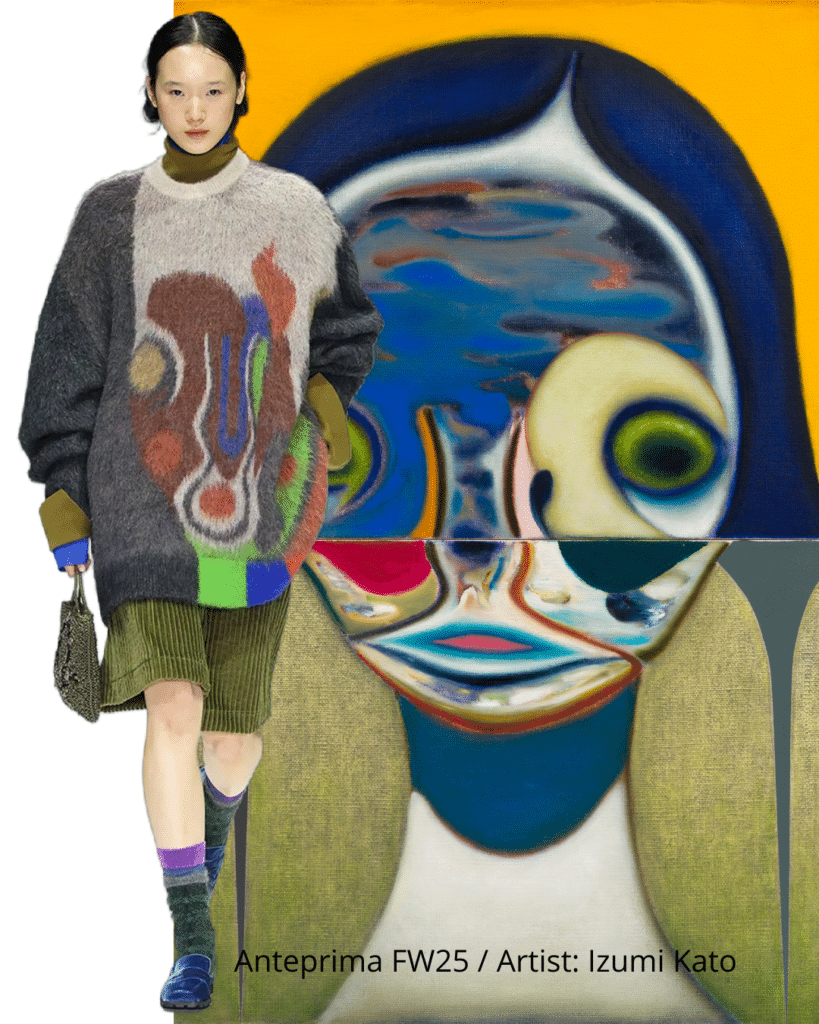
Layout Design By Dr. Manuela Pirola
This happened with Anteprima’s FW25/26 collection, emerged from the creative synergy between designer Izumi Ogino and Japanese artist Izumi Kato. Their collaboration actually led to unexpected meeting between fashion and art, where Kato’s enigmatic works, blending human and spiritual elements, inspired a collection that empowers women to express their unique personalities. Ogino describes each piece as an open canvas, inviting interpretation and celebrating individual beauty and inner strength.
Fashion as Emotional Expression
Fashion has become a powerful medium for emotional expression. Designers often draw inspiration from personal experiences or societal issues, weaving these themes into their collections. The clothes we wear can convey our mood, identity and beliefs, serving as a form of non-verbal communication. By tapping into the emotional aspect, fashion allows individuals to express themselves in ways that transcend language, creating a deeper connection between the wearer and the observer.
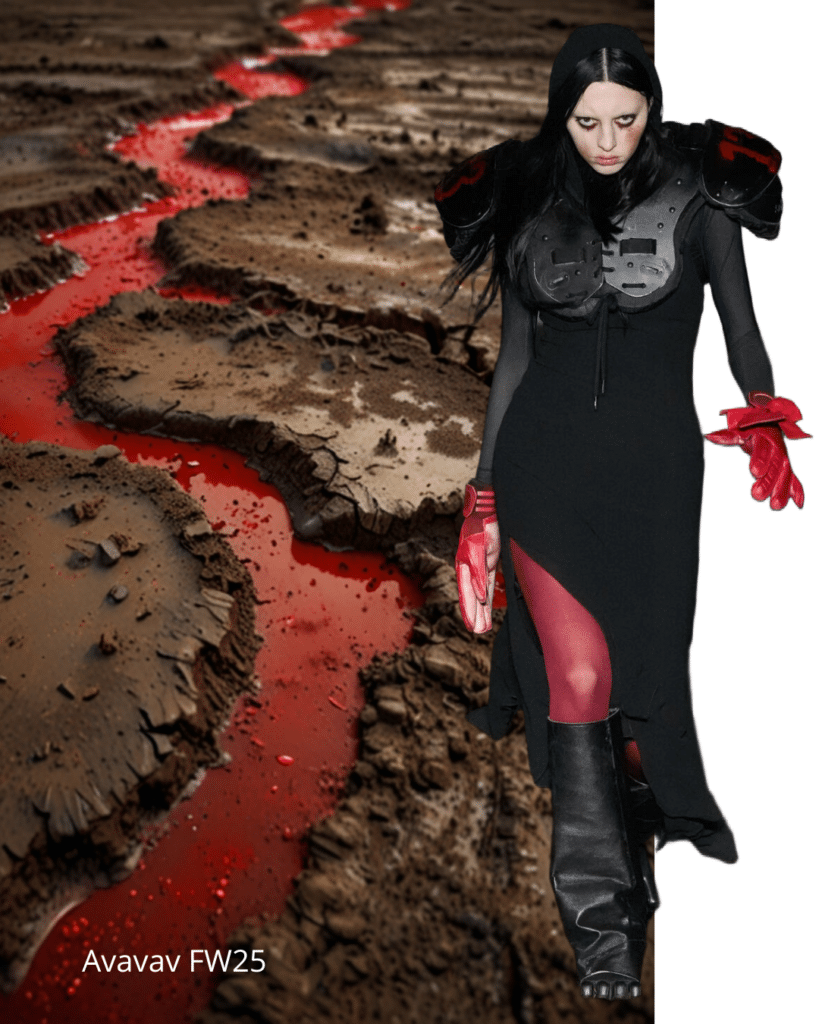
Layout Design By Dr. Manuela Pirola
For instance, Avavav‘s FW25-26 collection show took – once again – audiences by surprise with its provocative vision. Under the creative direction of Beate Skonare Karlsson, the catwalk was transformed into an emotional battlefield. Models emerged from the ground, metaphorically covered in dirt and blood, reflecting themes of vulnerability and fear, the same sentiments which have recently accompanied Karlsson’s life, as she declared. The collection poignantly addressed physical fragility and the uncertainties of life in opposition to the strength and resilience of fashion.
Fashion as Spirituality & Cultural Heritage
As globalization continues to shape our world, no wonder fashion has become a canvas for spiritual and cultural exploration. Designers incorporate elements from diverse traditions and spirituality, creating collections that celebrate and respect various cultural identities. This approach not only enriches the fashion landscape but also promotes inclusivity and understanding among different communities. Fashion becomes a dialogue, a way to bridge cultural gaps and celebrate the diversity of human experience.
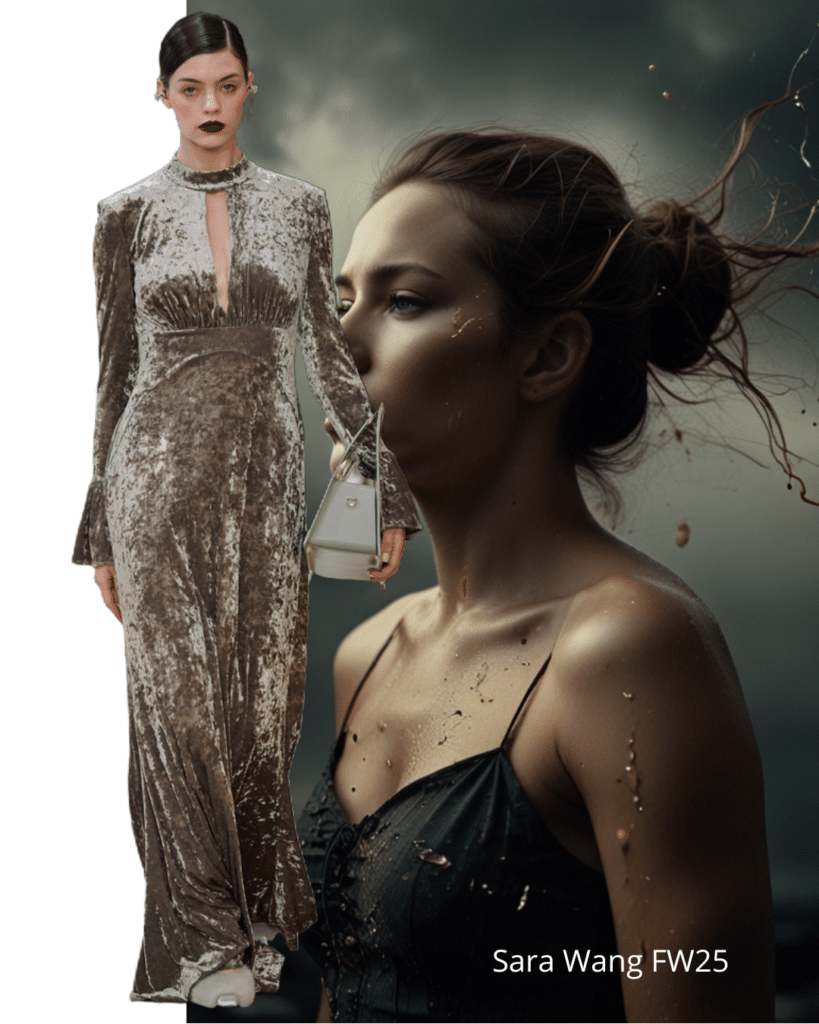
Layout Design By Dr. Manuela Pirola
The collection “All Within the Radius” by Sara Wang explored spirituality through a refined lens. Inspired by the invisible movement of water, seen as a symbol of introspection and change, each piece narrated a journey of inner growth. Intricate embroidery and ethereal fabrics connected Zen philosophy with contemporary Eastern culture, all wrapped in a minimalist aesthetic.
Fashion as Literature & Storytelling
Fashion often intersects with literature and storytelling, drawing inspiration from classic tales, contemporary narratives and poetic themes. Designers like to explore literary motifs, weaving stories into the fabric of their collections. This narrative dimension adds depth and context, inviting audiences to engage with fashion on an intellectual level. By incorporating storytelling, fashion becomes a medium for exploring complex ideas and themes, much like a novel or a film.

Layout Design By Dr. Manuela Pirola
In this sense, Max Mara‘s FW25-26 collection paid homage to English Literature, drawing inspiration from the melancholic landscapes of Yorkshire and the most famous literary heroines describes in the works of the Brontë sisters: Jane Eyre and Catherine Earnshaw. Jane Eyre, with her impeccable ease and indomitable spirit, represents sophisticated and resolute femininity. On the other hand, Catherine Earnshaw embodies rebellion and unbridled passion, elements that are reflected in the bold lines and refined details of the garments presented by Max Mara. The collection explored themes of inner strength and passion, with a color palette of warm beiges, greens, and reds. This evoked the duality of contemporary women: rational yet sensitive, strong yet passionate.
Fashion as De-Construction
The concept of fashion as de-construction is a fascinating approach that challenges traditional norms and opens up new avenues for creativity and innovation. It is about breaking down conventional designs and reconstructing them in unexpected ways, often resulting in garments that push the boundaries of style and functionality.
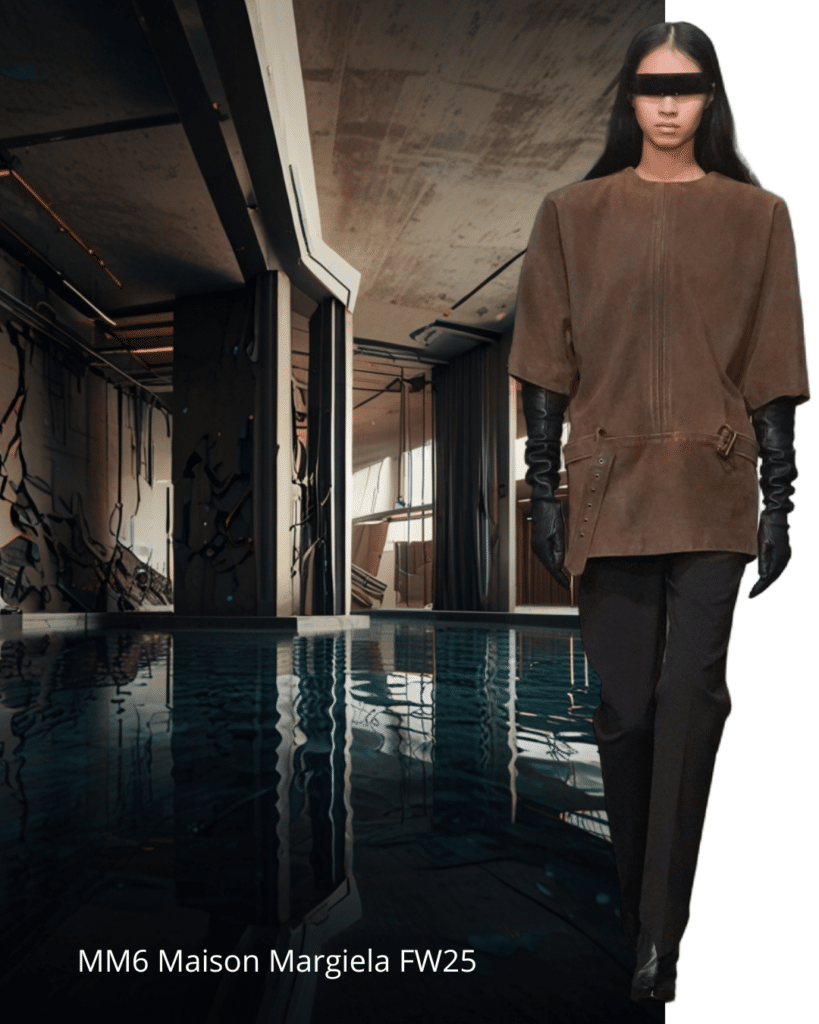
Layout Design By Dr. Manuela Pirola
MM6 Maison Margiela has long been known for its avant-garde approach to fashion and its recent collection at MFW FW25-26 is a testament to this reputation. The pioneering collection boldly embraces deconstruction, experimentation and fluidity, showcasing how fashion can be both an art form and a statement. Classic items such as coats and trench coats are transformed through the use of innovative materials and textures. These pieces are crafted to appear as if they were in constant motion, reflecting the ever-evolving nature of fashion itself. By reinterpreting these timeless garments, MM6 Maison Margiela invites us to see them in a new light. A noteworthy aspect of the collection is its genderless aesthetic. Oversized silhouettes dominate the runway, transcending traditional gender norms and promoting inclusivity. The use of neutral colors further emphasizes this theme, creating a versatile palette that appeals to all. While the collection primarily features neutral tones, the strategic use of red accents adds a dynamic contrast.
De-construction in fashion is more than just a design choice; it is a philosophy. It encourages designers to think outside the box and explore new possibilities. This approach not only challenges the status quo but also invites consumers to reconsider their perceptions of fashion and its role in society.
Fashion as Future
Looking towards the future, fashion often serves as a platform for exploring possibilities and imagining new realities. Milano Fashion Week also highlighted the future of fashion, with a focus on sustainability and innovative fabrics. Designers explored new materials and techniques to create fashion that not only captivates but also considers environmental impact. This forward-thinking approach is paving the way for a more sustainable fashion industry. Designers have been experimenting with technology and avant-garde concepts, pushing the boundaries of what fashion can be. Innovations such as smart textiles, 3D printing, and sustainable practices are not just trends but represent a vision of a future where fashion is both cutting-edge and responsible. This forward-thinking approach challenges the industry to evolve and adapt, ensuring its relevance in an ever-changing world.
In conclusion, Fashion’s evolution into a complex tapestry of Art, Emotion, Spirituality, Literature, Deconstruction and Futurism is a testament to its power as a form of expression. By embracing these elements, fashion not only enhances its creative potential but also becomes a significant cultural force that reflects and shapes the human experience. AD MAIORA SEMPER.


